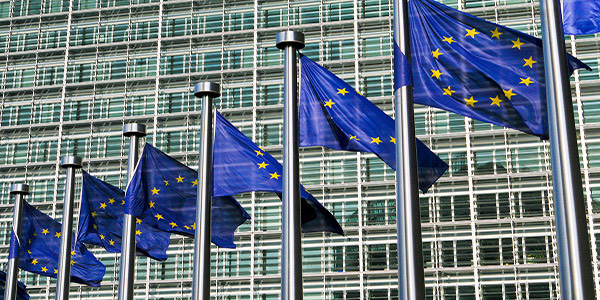Industry Research
EUIPO Report: Volume of Counterfeit Goods Account for Greater Share of World Trade
Published: March 26, 2019
Hadrien Valembois INTA Policy Officer, Europe

Fake goods are becoming more prevalent, with counterfeits and pirated products accounting for 3.3 percent of world trade and 6.8 percent of European Union (EU) imports, according to a new study, Trends in Trade in Counterfeit and Pirated Goods published by the European Union Intellectual Property Office (EUIPO) and the Organization for Economic Co-operation and Development (OECD).
The study, released on March 18, with data updated from its initial publication in 2016, provides a quantitative analysis of the value, scope, and magnitude of world trade in counterfeit and pirated products.
According to the study’s main findings:
- Globally, counterfeit and pirated goods are now estimated to account for as much as 3.3 percent of world trade, compared to 2.5 percent in the 2016 study. This amounts to EUR 460 billion (US $509 billion) per year.
- From an EU perspective, 6.8 percent of imports from the rest of the world consist of fakes, compared to 5 percent in the earlier study. This amounts to EUR 121 billion per year (US $134 billion).
The results rely on customs seizure observations and do not include domestically produced and consumed counterfeit and pirated products; nor do they include pirated digital content on the Internet. This hints that the actual phenomenon is much larger.
Among the other notable findings, the study shows:
- Small shipments are on the rise: The use of small shipments, sent by post or the most used express services, for trade in fakes also keeps growing, accounting for 69 percent of customs seizures of intellectual property-infringing products for the 2014-2016 period, versus 63 percent for the 2011-2013 period.
- Top eight “most-counterfeit” product categories remains the same: The top eight product categories most subject to counterfeiting and piracy have not changed from the previous study-1) footwear; 2) clothing; 3) articles of leather; 4) electrical machinery and equipment; 5) watches; 6) sunglasses; 7) perfumes and cosmetics; and 8) toys and games.
- OECD countries remain main targets, but non-OECD economies are increasingly being hit: The companies suffering from counterfeiting and piracy continue to be primarily registered in OECD countries; mainly in the United States, France, Italy, Switzerland, Germany, Japan, Korea, and the United Kingdom. However, a growing number of companies registered in high-income non-member economies, such as Singapore and Hong Kong, SAR, China, are becoming targets. In addition, a rising number of rights holders threatened by counterfeiting are registered in Brazil, China, and other emerging economies.
- Free Trade Zones (FTZs) garner more fakes: The share of fake goods from economies hosting the 20 biggest FTZs is twice as big as from economies that do not host any FTZs. Moreover, an additional FTZ within an economy is associated with a 5.9 percent increase in the value of these problematic exports on average.
- Link established between counterfeiting and health safety: The reports highlights the link between counterfeiting and health safety, stressing that “a growing scope of counterfeit products can pose significant threats to the environment or to consumer health and safety” and that “the intensity of trade in fake goods that can lead to environmental or consumer health and safety risks keeps growing in almost all sectors impacted by counterfeiting.”
It is important to note that the study provides a quantitative analysis of the global trade in counterfeit and pirated products in order to inform and raise awareness among policy makers and the general public, but it does not include any policy recommendations. It is, therefore, ultimately up to policy makers to build such recommendations and follow-up actions based upon these findings.
INTA advocates at the national and international levels to strengthen anticounterfeiting laws and enforcement, and to increase governments’ cooperation to eliminate linkages between counterfeiting and organized crime, as well as serious threats posed by counterfeiting to the health and safety of consumers, economies, and national security.
In addition, the Association supports the development and passage of legislation, regulations, and trade agreements throughout the world that increase national and international enforcement mechanisms against counterfeiting. Through the organization’s Anticounterfeiting Committee and Unreal Campaign Committee , and, partnerships with governments and associations, INTA emphasizes the importance of strong anticounterfeiting measures and increased awareness of the harms of counterfeiting.
For more information, please visit INTA’s Anticounterfeiting web page”‹ or contact INTA Manager, Anticounterfeiting Maysa Razavi at [email protected]; INTA Advisor Anticounterfeiting Tiffany Pho at [email protected]; or INTA Advisor Anticounterfeiting, Asia-Pacific, Valentina Salmoiraghi at [email protected]. For more information about the Unreal Campaign, contact INTA Associate, Strategic Partnerships & Unreal Campaign, Catherine Shen at [email protected].”‹”‹